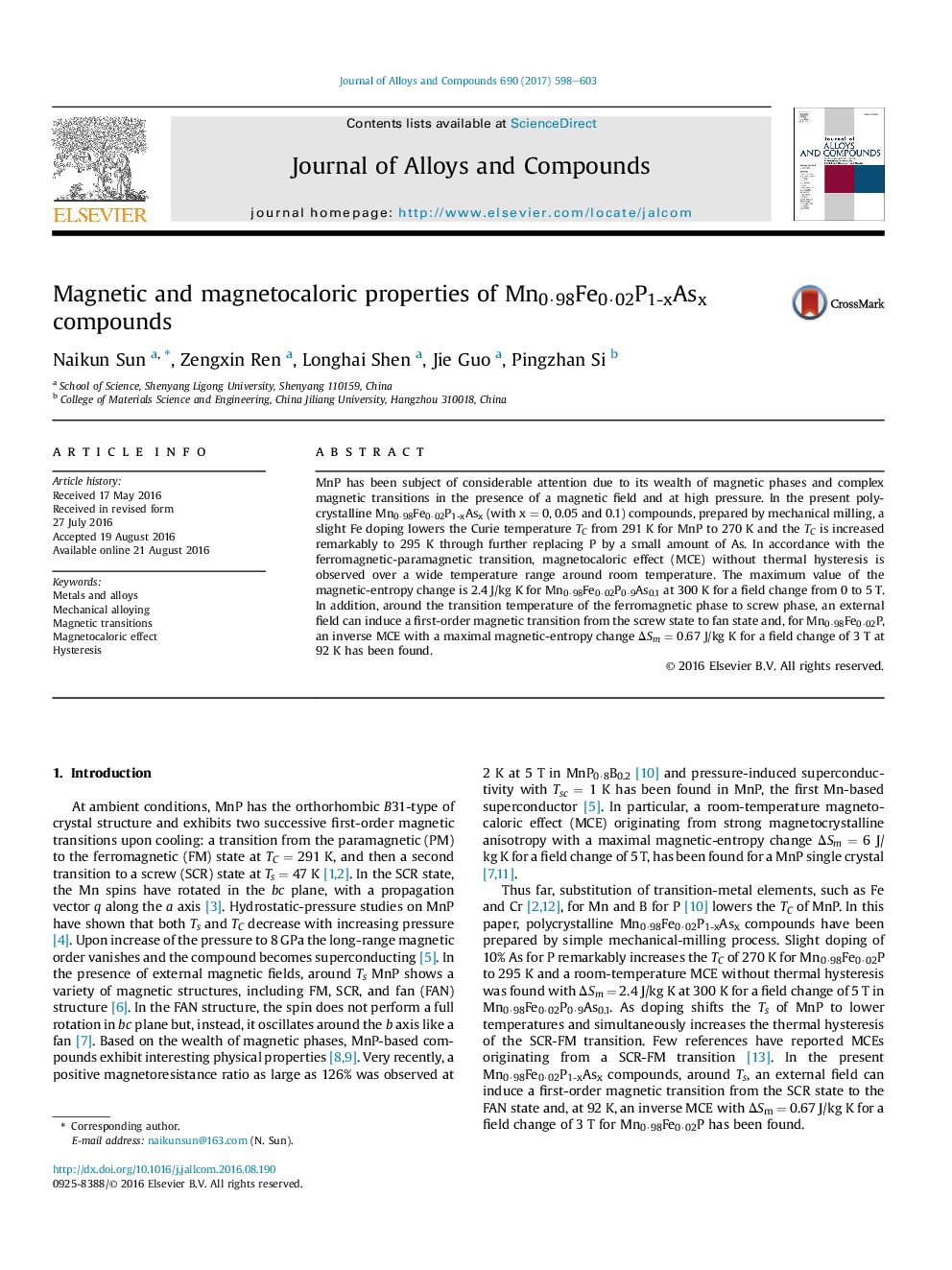| Article ID | Journal | Published Year | Pages | File Type |
|---|---|---|---|---|
| 1604962 | Journal of Alloys and Compounds | 2017 | 6 Pages |
•Single-phase Mn0·98Fe0·02P1-xAsx compounds were prepared by mechanical milling.•Fe doping lowers the TC and the TC is increased by a substitution of As for P.•The maximum ΔSm of 2.4 J/kg K has been found for x = 0.1 sample at 300 K under 5 T.•An inverse MCE originating from a field-induced SCR-FAN transition has been found.
MnP has been subject of considerable attention due to its wealth of magnetic phases and complex magnetic transitions in the presence of a magnetic field and at high pressure. In the present polycrystalline Mn0·98Fe0·02P1-xAsx (with x = 0, 0.05 and 0.1) compounds, prepared by mechanical milling, a slight Fe doping lowers the Curie temperature TC from 291 K for MnP to 270 K and the TC is increased remarkably to 295 K through further replacing P by a small amount of As. In accordance with the ferromagnetic-paramagnetic transition, magnetocaloric effect (MCE) without thermal hysteresis is observed over a wide temperature range around room temperature. The maximum value of the magnetic-entropy change is 2.4 J/kg K for Mn0·98Fe0·02P0·9As0.1 at 300 K for a field change from 0 to 5 T. In addition, around the transition temperature of the ferromagnetic phase to screw phase, an external field can induce a first-order magnetic transition from the screw state to fan state and, for Mn0·98Fe0·02P, an inverse MCE with a maximal magnetic-entropy change ΔSm = 0.67 J/kg K for a field change of 3 T at 92 K has been found.
